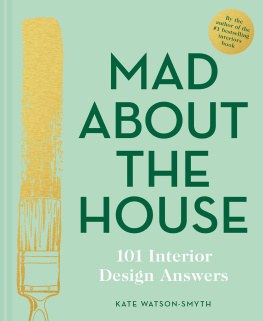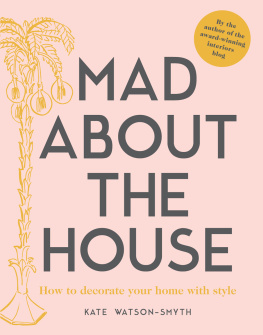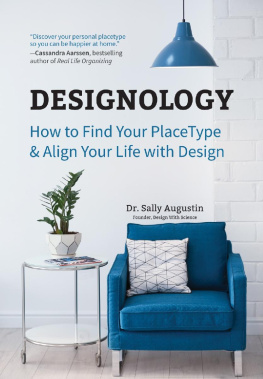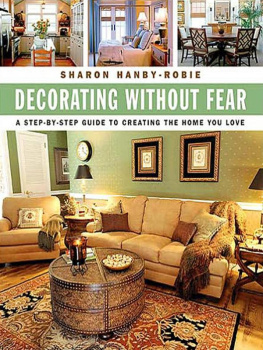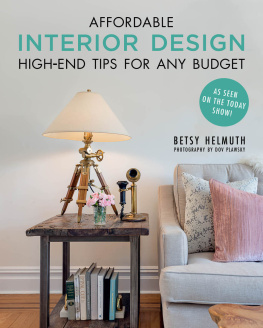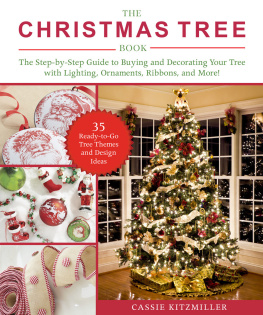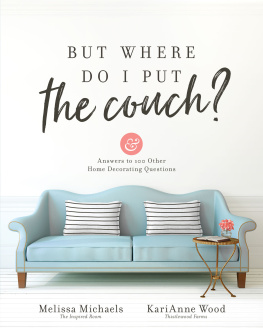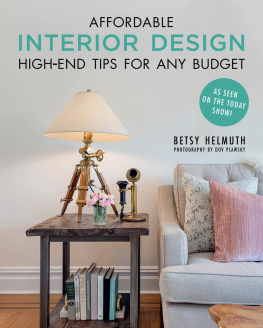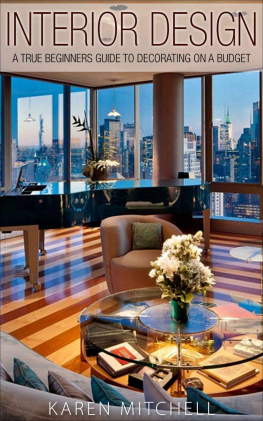Contents
Guide
MAD
ABOUT
THE
HOUSE
MAD
ABOUT
THE
HOUSE
101 Interior Design Answers
KATE WATSON-SMYTH

CONTENTS



I have been writing about interiors for 20 years and helping clients to style their homes for more than 10. A couple of years ago I went to meet a client to help her with the finishing touches to her home...
I was there for nearly three hours looking at all the rooms, seeing what she had already done and where she still needed help or ideas. We discussed how she was using each space and what was missing. Then I drew up a report covering everything we had talked about and included photos for inspiration and links to items we had decided she might need, with several options for each piece. A couple of weeks later I received an email from her. The consultation, she wrote, had been quite helpful. She knew what she now needed and was making plans to get hold of it all. But she couldnt help pointing out that she was also a little disappointed.
My stomach flipped over. I dont know what my style is so I dont feel completely happy with the service, she said. My stomach flipped back. I stared thoughtfully out of the window for a few moments. Your style, I typed firmly, is modern rustic. A few minutes later my inbox pinged: Thank you so much. Its been so helpful to meet you and Im so excited to finish off all the details of the house. I would thoroughly recommend you to anyone. And after reading that I couldnt help but wonder (cue Sex and the City voice-over), do we all need to belong to a gang to feel valid? Do we need to find our interior design squad before we can be really happy in the space we have created?
Now I would say no. Emphatically not. Probably However, it is true that in these days of online shopping it definitely helps if you can attach a label to your style so that you can hunt down what you want out there on the big old internet. Are you looking for a shabby-chic dressing table, or a modern rustic kitchen table? Is your living room country casual or urban glamour? I have wasted many an hour searching for a thingumajig only to find them in plentiful supply once I realized that what I actually needed was a thingumabob. So yes, you do need to know your style so you can find your tribe. Or at least your sofa.
Its a topic I dealt with at length in my last book, and while this is intended as a more practical guide, its worth recapping for those of you who have arrived here first. Knowing your style means that you can buy less, because you will buy well. Knowing your style will save you money, because you wont be making mistakes. And it means and this relates to another question I am asked on a weekly basis that your home will have an automatically cohesive look, because you will be shopping from the same palette and style and everything will fit together. (Which is not to say you cant fling a neon cushion into a room full of pastels, but do that in more than one place or it might look a bit random.)
Once you have worked out your style and feel comfortable with everything you have chosen, then your home will automatically tell the story of the people who live within its walls. It will have a more considered appearance, which might sound like posh interior design talk, but actually just means that it will look like you thought about it and made a decision about what you were buying.
One of the most welcoming things about a house is being able to get a sense of who it belongs to as soon as you walk inside. But does knowing your style and making the choice to stick to it mean you can never indulge in a spot of spontaneous trend shopping? Read on

This is a question I am asked more than any other: should I follow trends? The short answer is no, probably not, because you should buy only things you love and that you will love forever.
But the longer answer is that most of us do buy into trends (pun intended) to a certain degree, not least because they dictate what is available at any given time. Who hasnt tried to buy a navy sweater when all around is a sea of grey and black? Who hasnt noticed that the high-street windows all seem to have the same colours in them? (And woe betide you if you want something different.)
Contrary to what you might think, interior trends move much more slowly than fashion does. It starts on the pages of the magazines, then a few early adopters (usually interior designers and the so-called Instagram influencers) will bring it into their homes and show it off on social media. Bear in mind that this is partly because they will have seen it way before anyone else. Gradually it makes its way off the printed and digital page and into the home of someone you know. And so it begins.
What you see in Milan might not come to Milton Keynes for three years, but come it will.
Kimberly Duran, who blogs at Swoon Worthy, likens the rise and fall of trends to a bell curve, which she bases on E.M. Rogers Diffusion of Innovation Theory (well yes, quite). What that means, she says, is that designers, innovators and trendsetters (about 2.5 per cent of the population) will be the first to use a specific material, colour or finish. It will then be embraced by early adopters (13.5 per cent).
There are two groups which make up the bulk of the population in fact, around 68 per cent of people will fall into these categories. The first, the early majority, will adopt the trend when it begins to become more mainstream. Maybe they see their favourite bloggers post about it or they see it take off on Instagram. Once the trend hits its peak, youll see it adopted by what is called the late majority. These are the people who are now seeing it everywhere (from Pinterest to their local supermarket) and decide its time to invest.
At the very tail end of the curve are the laggards (16 per cent), for whom trends are mostly ignored, and so its only once the trend has completely saturated the market and prices begin to fall that they will consider buying. This is important to know because how much time elapses from the beginning of the curve to the end (ie the full lifetime of a trend) varies considerably. Normally, Kimberly notes, the faster a trend reaches its peak the faster it will fall out of favour. At the same time, the longer a trend takes to be adopted by the majority, the longer it takes to fall out of fashion.
Dont forget that if stores see something selling well they are going to stock more of it, not less. Thats why you may hear someone proclaim Millennial Pink is out when in fact it has simply hit its peak and is now moving down the other side of the curve. Youll still find it in stores and youll still see people buying up blush pink items. Its not really out at all. Its just those early adopters like the magazines and Instagrammers have found something else to get excited about. And so it begins again with something different.

